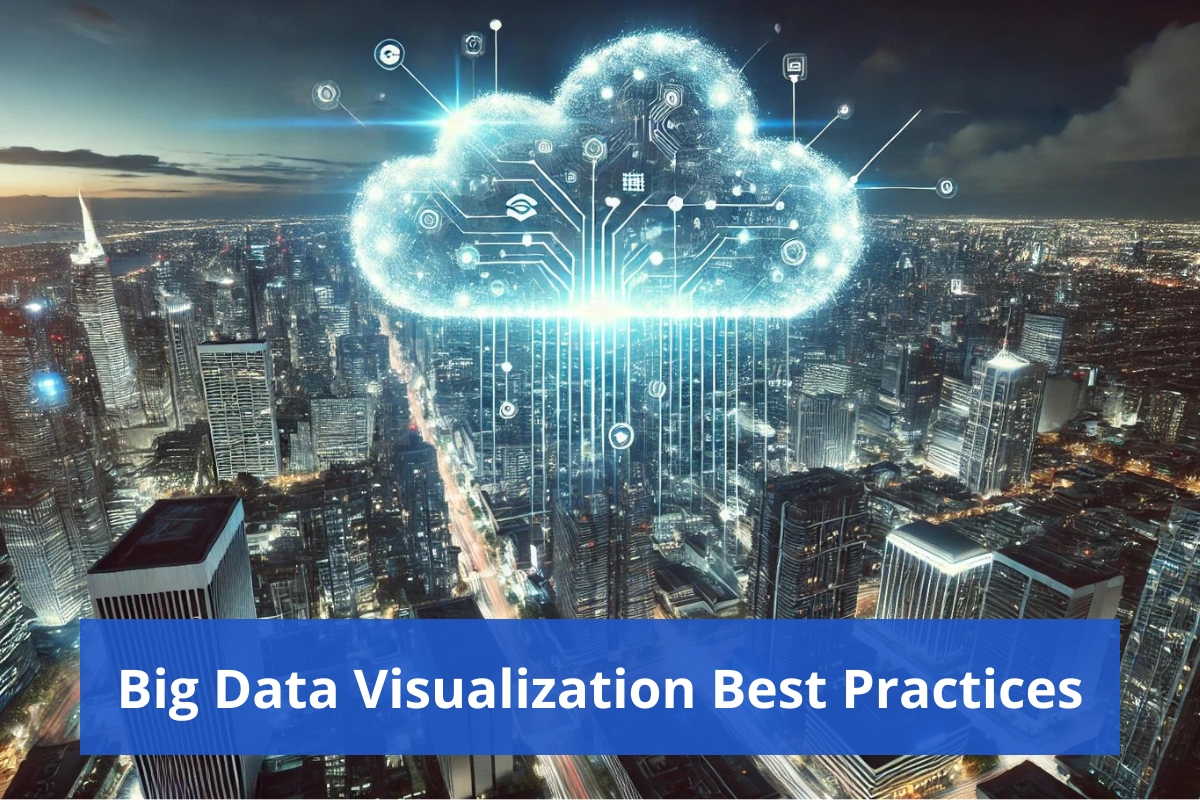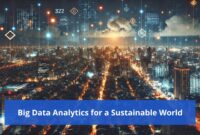The rise of Big Data over the years has led to a shift in the operational focus of businesses by providing vast amounts of information that can be used in decision-making and strategic implementation. However, the sheer volume and diversity of this data present a challenge when it comes to analyzing it with appropriate methods and tools. This is where data visualization comes into play.
Businesses utilize data representation in various ways, including charts, graphs, and dashboards, because it is uncommon for people to seek insights from raw data alone. Properly designed and executed Big Data visualization improves the understanding of data and the explanation of results obtained from data analysis.
Nevertheless, handling large volumes of information requires significant effort to create an appropriate visual presentation. Useful guidelines for Big Data visualization, aimed at ensuring clarity in data presentation, include:
Why Visualization is Important in Big Data
Images convey information more easily than words or numbers for many people. When applied to businesses, depicting data can reduce the time needed to gain insights while enhancing decision-making processes. Visualization helps:
Avoid Overburdening Users: Organize extensive raw datasets to prevent overwhelming users. Presenting data in its raw form can be daunting, whereas data presentation encapsulates tedious processes.
Expose Patterns and Trends: Graphical presentations can highlight correlations, trends, or outliers that might otherwise remain hidden.
Facilitate Communication: Visuals can be more effective than lengthy figures when persuading stakeholders or non-technical audiences.
Facilitate Informed Decision-Making: Graphically displaying data insights helps in making faster and bolder decisions.
Big Data visualization not only addresses information transmission problems but also enhances data comprehension when done correctly.
Choosing the Right Visualization for Big Data
Choosing the right type of visualization for the information and the narrative is crucial for effective Big Data visual storytelling. Common visualizations include:
- Line Charts: Represent landmark events and show the continuous increase or decrease of a value over time.
- Bar Charts: Effective for showing the capacity of different groups.
- Pie Charts: Useful for depicting proportions but should be used sparingly to avoid clutter.
- Heat Maps: Display relationships between variables in a two-dimensional space using colors to indicate data amounts.
- Scatter Plots: Show the relationship between two quantitative or numerical variables.
- Dashboards: Combine various visualizations to provide detailed information.
Selecting the correct visualization type is vital, as it impacts data analysis. For example, using a pie chart for time-series data would be incorrect and complicate the presentation.
Reducing the Complexity
Certain aspects of Big Data, such as the volume and detail, can be unwieldy. Simplicity is key for successful visualization. Avoid overly busy charts with excessive data or visual elements. To reduce complexity:
Highlight Important Metrics: Include only the relevant data for each reporting metric. Remove unnecessary details that could confuse users.
- Label Clearly: Provide unambiguous labels for all components, including axes, categories, and data points.
- Control Color Usage: Use a limited color palette to emphasize important data points without overwhelming viewers.
- Minimize Charting Components: Reduce grid lines, borders, and legends to avoid distracting from the data.
The goal is to present information in a clear and understandable manner without misleading or confusing the target audience.
Utilizing Interactivity in Visual Representations
Two-dimensional charts, bar charts, and similar visuals may not always convey the full story. Interactivity can enhance user experience by allowing deeper data exploration:
- Zooming and Panning: Allow users to zoom into specific data or date ranges for greater clarity.
- Filtering Options: Enable users to exclude certain data sets using parameters, such as time frames, to focus on what’s important.
- Drill-Down Capabilities: Provide interactive options where users can click to see more details about specific data points.
Interactive visualizations are dynamic and user-friendly, especially for complex datasets or dashboards.
Focus on Data Accuracy
Accuracy is crucial for effective Big Data visualization. Even the most sophisticated charts and graphs are useless if the data is inaccurate. To ensure data accuracy:
- Check Data Sources: Confirm that the data is recent and reliable to avoid generating poor or false insights.
- Select Appropriate Scales: Avoid using multiple scales on axes that can distort data interpretation. For example, starting the Y-axis at a point other than zero can skew a bar graph.
- Consider Extreme Points: Be mindful of extreme values or outliers that can distort the aggregate data.
The design’s beauty is less important than the simplicity and accuracy of the graphics.
Revise Usage of Color and Design
Color is a crucial element in Big Data visualization. When used correctly, it aids perception and understanding. Follow these rules:
- Use Color to Emphasize: Highlight important data points or trends rather than merely decorating the chart.
- Avoid Overdoing Colors: Limit the number of colors to prevent confusion and maintain focus on the data.
- Consider Colorblind Users: Choose color schemes that are accessible to all users, avoiding problematic combinations like red and green.
- Maintain Consistency: Use consistent colors across similar charts to avoid confusion.
Ensure that font size, spacing, and contrast are appropriate for clear visualization.
Contextualization
Context is essential in Big Data visualization. Explain what the data depicts and its relevance. Use titles, captions, or annotations to help viewers understand the significance of the data.
- Historical Data and Benchmarks: Provide context such as historical data or industry benchmarks to define the meaning of data points.
- Summarize Key Insights: Outline notable insights along with the visual to guide viewers on what to focus on.
Providing context helps turn data into actionable business insights rather than leaving viewers to infer meanings.
Tools for Big Data Visualization
Several tools can create Big Data visualizations, each with its own advantages:
Tableau: Popular for its ease of use and interactive capabilities.
Microsoft Power BI: Integrates well with other Microsoft products for visualization preparation.
Google Data Studio: Free tool that integrates with Google Analytics and other data sources for reports and dashboards.
D3.js: A JavaScript library for creating web-based visual data presentations.
Qlik Sense: A self-service analytic tool allowing users to explore and represent their data without advanced IT skills.
Choosing the right tool depends on your data, technological expertise, and visualization needs.
Final Words
Big Data visualization is a significant aspect of modern business intelligence. By adhering to guidelines for selecting appropriate visualizations, reducing complexity, ensuring accuracy, and providing context, you can transform vast datasets into meaningful insights. Effective data visualization enhances decision-making, communication, and action across an organization, making it increasingly vital as the volume and types of data collected continue to grow.



